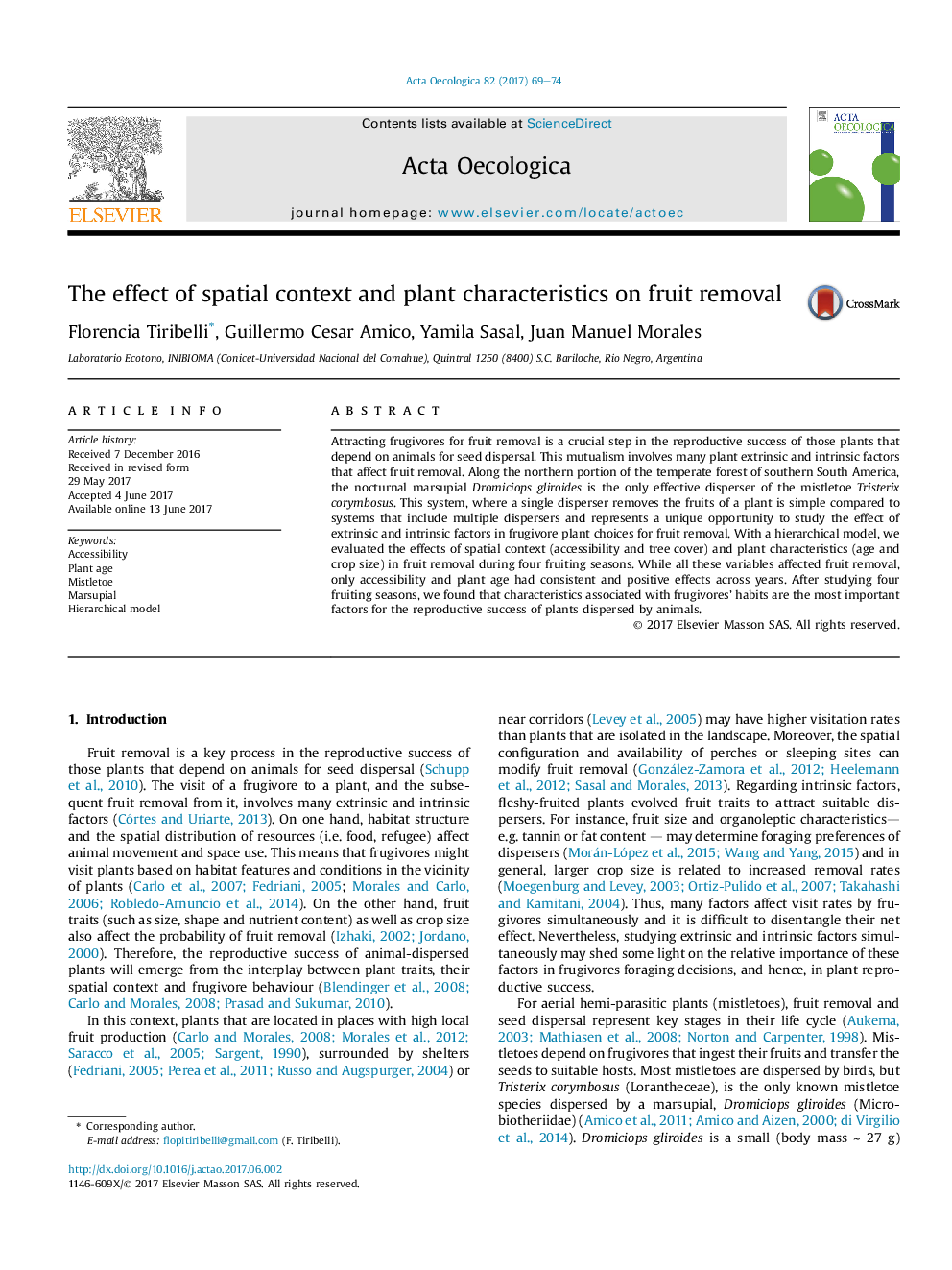| Article ID | Journal | Published Year | Pages | File Type |
|---|---|---|---|---|
| 5742508 | Acta Oecologica | 2017 | 6 Pages |
â¢Environmental features associated to frugivores habits are crucial for fruit removal.â¢Dromiciops gliroides selects plants depending on extrinsic factors.â¢Individual crop size does not guarantee Tristerix corymbosus reproductive success.
Attracting frugivores for fruit removal is a crucial step in the reproductive success of those plants that depend on animals for seed dispersal. This mutualism involves many plant extrinsic and intrinsic factors that affect fruit removal. Along the northern portion of the temperate forest of southern South America, the nocturnal marsupial Dromiciops gliroides is the only effective disperser of the mistletoe Tristerix corymbosus. This system, where a single disperser removes the fruits of a plant is simple compared to systems that include multiple dispersers and represents a unique opportunity to study the effect of extrinsic and intrinsic factors in frugivore plant choices for fruit removal. With a hierarchical model, we evaluated the effects of spatial context (accessibility and tree cover) and plant characteristics (age and crop size) in fruit removal during four fruiting seasons. While all these variables affected fruit removal, only accessibility and plant age had consistent and positive effects across years. After studying four fruiting seasons, we found that characteristics associated with frugivores' habits are the most important factors for the reproductive success of plants dispersed by animals.
